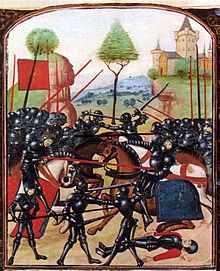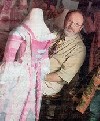Edward Maeder Seminar at Berkshire Botanical Gardens
The Rose in Art and Fashion—700 Years June 12 to 14
By: BBG - May 28, 2012
The eminent curator and author Edward Maeder will lead a three-day seminar at Berkshire Botanical Gardens (BBG) with lectures on "The Rose in Art and Fashion—700 Years", and "Gardens in the Decorative Arts". The lectures will be followed by hands-on demonstrations and workshops: "Exploring Paper Possibilities with Collage and Floral Inspiration". The events will be held June 12 to 14, at BBG, 5 West Stockbridge Road, Stockbridge, Massachusetts 01262
Tickets are priced at $150 for the lectures—Tuesday June 12 and Wednesday June 13. The two workshops also cost $150 for each session—Wednesday June 13 and Thursday June 14. Due to limited attendance, workshop participants will be accepted on a first-come, first-served basis.
At the end of the last workshop, Thursday June 14, there will be unique 'flash retailing'. All attendees and the public are welcomed to shop at the Garden's pop-up market for limited edition products from niche retailers. Following that, a free concert will take place at Berkshire Botanical Gardens. Further details of the events soon will be announced.
For tickets, contact Berkshire Botanical Garden at (413) 298-3926, between 9 am and 4:30 pm, Monday through Friday — or info@berkshirebotanical.org.
This project is organized by Cross-Cultural Cool—The C3 Partnership, in association with Edward Maeder and Berkshire Botanical Garden.
Lectures & Workshops with Edward Maeder
"The Rose in Art and Fashion—700 Years" is an illustrated lecture that addresses some of the diverse history of this most popular flower. Deeply symbolic in both religious and secular spheres of social and even political history, the ‘rose’ is part of our everyday experience. "The War of the Roses—(1989)" was not only a successful film about divorce in contemporary society. The term was originally used to identify the dynastic civil wars fought between rival branches of the Royal House of Plantagenet: The English houses of Lancaster and York (each symbolized by the ‘red’ and the ‘white’ rose respectively) in the second half of the 15th century.
Roses have been used for millennia in paintings, sculpture, embroidery, manuscript illustration and stained glass windows, but the beauty of the natural flower itself has never been surpassed.
Since the 17th century, high fashion has embraced the rose in works of art. By the first decades of the 19th century, roses were hybridized and named after famous beautiful women, often aristocrats. The shape and color of these ‘new’ roses fit perfectly into the aesthetics of high fashion and coincided with the desire for floral scent.
"The Rose in Art ..." will explore some of the connections between the ubiquitous ‘rose’ and some often forgotten history.
This lecture, scheduled for Tuesday June 12, is presented in two, two-hour sessions. Part one will begin at 12pm during a catered lunch until 2pm. It will be followed by a half hour break. Part two, from 2:30pm to 4:30pm, will be a follow up session with a demonstration in fashioning a signature "Maeder-Made Paper Dress".
"Gardens in the Decorative Arts" is another PowerPoint lecture presentation illustrating the influence of "gardens" in the various arts.
This lecture is scheduled for Wednesday June 13 as a two-hour presentation during lunch, from 12pm to 2pm. It will be followed by one half hour break.
"Exploring Paper Possibilities with Collage and Floral Inspiration", is the objective of both workshops. Flowers have inspired everything from great works of art, such as 17th century Dutch still-life paintings, to wrapping paper and table napkins. Gardens were brought 'indoors' in the 18th century in the form of elaborate, often technically accurate, woven and embroidered silks worn by affluent members of society. Through a simple technique of paper collage, these found paper products have been used by Maeder to create full size 18th century gowns as well as other forms inspired by history and art.
A presentation and demonstration of how these techniques can be used are part of the workshops scheduled for Wednesday June 13 and Thursday June 14 from 2:30pm to 4:30pm.
About Edward Maeder
Edward Maeder, who resides in South Deerfield, Massachusetts, is a curator, historian, textile conservator, scholar, author, educator, milliner, artist, and now a fellow at Quimby Colony, where he is pursuing an art/ costume/ historic/ paper project that started 10 years ago when he began his curatorship at Historic Deerfield.
Maeder is most known for his book, "An Elegant Art: Fashion and Fantasy in the Eighteenth Century". He also was renowned for an exhibition at the Los Angeles County Museum of Art: "Hollywood and History: Costume Design in Film", which traveled to the Museum of Fine Arts, Boston and the Palais de la Civilisation in Montreal.
He has written numerous articles in German, Italian, Spanish, French and Dutch. Maeder lectures widely on topics from "The Rise and Fall of the Female Breast: The Aesthetics of the Bosom in History", to "Clothes for the Table: the Creation, Care and Mystique of Table Linen, 1500-1800".
Maeder is also known for research on a broad area of costume studies. This ranges from work on the Sistine Chapel to the design and making of the 15 turbans and hats for the reenactment costumes in the noteworthy PBS/WGBH American Experience film series: "Significant First Ladies". These items were made for the episode, "Dolly Madison," the wife of James Madison who defined the role of the President's wife, and became America's first 'First Lady'.
Maeder plays the piano when the opportunity presents itself.
In His Own Words: Maeder on Maeder
My days are filled with exciting projects from lectures and writing, to historical advice about dating photos or paintings by the costumes being worn. I have been expanding my lectures and turning them into PowerPoint presentations. Last year I was part of an international symposium on "Gros Point de Venise: Needle Lace of 1660-1685", where I presented a paper on the Frick family portraits from the Worcester Art Museum. I continue to do hat-making workshops across the country from New York to Wisconsin, Connecticut to Kentucky.
I am obsessed with classic film. In fact, I have just completed an essay for the catalogue of the "Hollywood Costume Exhibition" at The Victoria and Albert Museum in London on October 20, 2012.
My 'ascot' project is based on a collection of several thousand sample pieces of silk from a supplier to the New York tie industry from the 1940s to the 1970s. These are 'one of a kind' silk gentlemen's (or ladies of course) neck ties that came into fashion in the 1840s and are seen in many classic films. The size and shape was inspired by an 'ascot' from Christian Dior of the 1980s.
I love to cook and entertain and enjoy making chutney. In fact, I'm working on a book about my personal food experiences that are now over 25,000 words.
There is never a dull moment.
About "Cross-Cultural Cool" — The C3 Partnership:
The rationale behind establishing “Cross-Cultural Cool” as “The C3 Partnership” is based on what our team—“the C3Partners”— believes to be a prime directive: that any project we endeavor to create and produce must fundamentally be about the cross-pollination of the arts. Furthermore, it must be socially progressive, culturally diverse, ecologically friendly and definitely profitable … namely cross-cultural cool.
The C3Partners—Mitchell Speight, J.M. Robert Henriquez, Joan M. Jackson & Lisa M. Avery represent substantial experiences through many years of working in all areas of broadcast and film media, as well as live entertainment and theatre.




